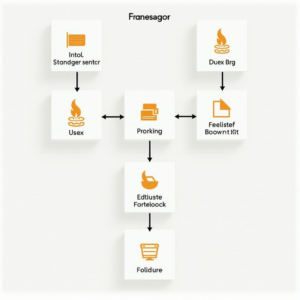
Introduction to CodeIgniter Deployment
CodeIgniter is a popular PHP framework used for building web applications. After developing a CodeIgniter application, the next step is to deploy and host it on a production server. In this article, we will discuss the best practices for deploying and hosting CodeIgniter applications effectively.Deploying a CodeIgniter application involves several steps, including setting up the production environment, configuring the framework, and optimizing performance. A well-planned deployment strategy ensures that the application is stable, secure, and scalable.
Pre-Deployment Checklist
Before deploying a CodeIgniter application, it is essential to ensure that the following tasks are completed:Verify that the application is fully tested and debugged. Update the framework and its dependencies to the latest versions. Configure the database settings for the production environment. Set up a version control system, such as Git, to manage code changes.Additionally, make sure to remove any unnecessary files, such as debug logs and temporary files, to prevent security risks and improve performance.

Deployment Options
There are several deployment options available for CodeIgniter applications, including:Shared Hosting: This is a cost-effective option, where the application is hosted on a shared server with other websites. However, it may have limited resources and security risks. Virtual Private Server (VPS): This option provides a dedicated virtual server with more control and resources. Dedicated Hosting: This is a high-end option, where the application is hosted on a dedicated server with full control and resources.Cloud Hosting: This option provides scalability and flexibility, where the application is hosted on a cloud server with automatic resource allocation. Containerization: This option uses containerization tools, such as Docker, to deploy the application in a containerized environment.
Configuring CodeIgniter for Deployment
To configure CodeIgniter for deployment, follow these steps:Set the base URL in the config.php file to the production environment URL. Configure the database settings in the database.php file. Update the environment variables in the index.php file to point to the production environment.Additionally, make sure to enable the production mode in the config.php file by setting the environment variable to ‘production’. This will disable debug mode and improve performance.
Optimizing Performance
To optimize the performance of a CodeIgniter application, follow these best practices:Use a caching mechanism, such as file caching or database caching, to reduce database queries. Optimize database queries using indexing and query optimization techniques. Use a content delivery network (CDN) to distribute static assets.Enable Gzip compression to reduce the size of HTTP requests. Use a PHP accelerator, such as OPcache, to improve PHP performance. Monitor application performance using tools, such as New Relic or Datadog.
Security Considerations
To ensure the security of a CodeIgniter application, follow these best practices:Use secure protocols, such as HTTPS, to encrypt data transmission. Validate and sanitize user input to prevent SQL injection and cross-site scripting (XSS) attacks. Use a secure password hashing algorithm, such as bcrypt, to store passwords.Keep the framework and its dependencies up to date to prevent vulnerabilities. Use a web application firewall (WAF) to detect and prevent common web attacks. Monitor application logs to detect and respond to security incidents.
Conclusion
In conclusion, deploying and hosting a CodeIgniter application requires careful planning and execution. By following the best practices outlined in this article, developers can ensure that their application is stable, secure, and scalable.By choosing the right deployment option, configuring the framework, optimizing performance, and ensuring security, developers can deploy their CodeIgniter application effectively and provide a high-quality user experience.

